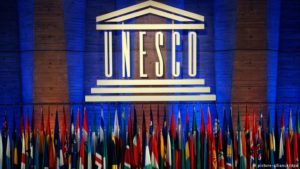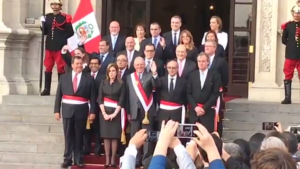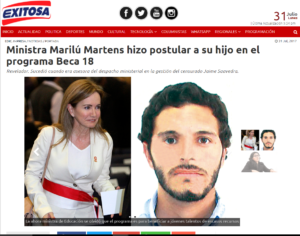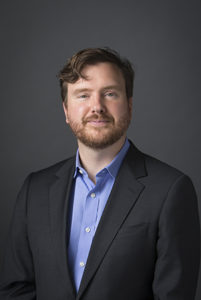In Cambridge, Mass., a woman named Kristin sits down on a stone bench to talk about a common but rarely discussed injury that’s starting to grow along with the opioid epidemic: rape.
We’ve agreed to use just Kristin’s first name because she’s a victim of this crime. Kristin says she, like many women who live on the streets, cope with the daily fear of an attack that they are too sedated to fend off, or of waking up to find their pants pulled down, bruises, and other signs of an assault.
It’s an assault active drug users often don’t report out of shame, distrust of police, or fear they’ll be labeled a “cop caller” and have trouble buying heroin. It’s an injury women say they can’t figure out how to prevent. And it’s one few doctors think to ask about, and thus rarely treat.
The road to trouble starts many mornings, says Kristin, when she wakes up, sick and desperate for heroin but afraid to shoplift, sell the goods, and seek a dealer on her own. So she finds a male buddy, someone she calls a running partner.
“It’s just safer. People are less likely to beat you, rob you, sell you fake drugs if you’ve got a strong, well-known man with a reputation — a good reputation —you know,” says Kristin, 32, who still has the lanky body of a high school backstroke champion. She’s been addicted to opioids since she was 13 when they were prescribed to relieve pain after a shoulder surgery.
But sometimes that strong man with a good reputation turns out to be another danger. Kristin cringes at the memory of falling into a drug-induced sleep near a running partner she’d come to trust.
“I woke up to him on top of me, with my pants off, pretty much demanding that we have sex,” Kristin says, the emotion draining from her voice. “I’m weak because of the drugs I’ve taken, so I’m trying to push him off. I can’t do it. I grab my phone and just kind of barrel roll off the bed, pull my pants up, and run outside.”
That time Kristin got away. In two other attacks, she did not. She has story after story of unwanted kissing and groping. She says that for many women, there is steady pressure from those they partner with to perform sexual favors. After the attempted rape, Kristin pressed charges. Shortly before trial, the man died of a drug-related heart infection.
Other women interviewed for this story say they rarely seek help from police because they are worried investigators will turn on them and seek drug charges. Sometimes women are alert and recognize or can recall their assailant. Other times they only realize they’ve been raped because their clothes are torn, they have cuts or bruises and a sore vagina.
To prevent attacks, some women travel in pairs, but some say that doesn’t protect them from gang rape. They may arrange to ride out a high in view of a security camera, hoping someone would see and stop an assault.
After each assault, Kristin would try going solo on the streets. But then she’d get robbed or sold fake drugs and decide to find a new running partner. Kristin says she still attaches herself to men she knows are not safe. The drug addiction, she says, overpowers fear and common sense warnings.
“In hindsight, it’s like crazy, you look back and you’re like, ‘red flag, red flag, red flag,’ ” Kristin says. “I’m even noticing it in real time and pushing it aside because there’s a high waiting for me at the end.”
Two women who were sitting with Kristin and nodding while she spoke have drifted away. She glances over her shoulder when I ask if her experience is unusual.
“Between the other two women that were sitting here with me and the few that are across the street, combined, we probably have about 20 to 25 assaults or rapes,” Kristin says, her voice rising in anger. “It’s almost become normalized, and that’s messed up.”
While there’s lots of data on the connections between substance abuse and sexual violence in general, there’s little information about sexual assault stemming from the opioid epidemic.
Gina Scaramella, director of the Boston Area Rape Crisis Center, says she isn’t surprised by Kristin’s account. “I would almost be surprised if that wasn’t the case, to be 100 percent honest,” Scaramella says.
That’s because some assailants actually seek women and men whom they expect will be unconscious or semiconscious. Drug users may already be hiding from public view, and many have lost connections that might offer protection, “[l]ike a job, stable housing — people that know where they are and care where they are,” Scaramella says. “The isolation piece is a huge vulnerability for sexual violence because the offender will see that as an opportunity.”
One of Scaramella’s staff members is taking a course in substance use intervention as the center tries to address rape during the opioid epidemic.
Researchers are just beginning to document the problem. One study, published two years ago, asked 164 young adults in New York with an addiction to opioids about their experience with sexual violence. Forty-one percent of women and 11 percent of men said they had been forced to have sex while using drugs.
Authors urge more focus on prevention, but not just for potential victims.
“A lot of the focus is on telling people how to be safer when they are using or not impairing their judgment, but what we found was that there were people who were actively seeking out drug users, and more focus needs to be on them,” says study author Lauren Jessell.
One Boston physician says virtually all of her patients, mostly homeless women, have stories about sexual assaults.
“I wasn’t aware of this until more recently but I’m just struck by how common it is. In fact, it seems ubiquitous,” says Dr. Jessie Gaeta, medical director at the Boston Health Care for the Homeless Program.
Gaeta oversees the only clinic in the state where drug users can ride out a high in comfortable chairs with medical staff monitoring their conditions and safety.
Gaeta says women often pull her aside as they return to full consciousness, to ask if she’ll look at infections, cuts or swelling around their genitals.
“The stories are just so heart wrenching about the worst possible kind of sexual trauma,” Gaeta says.
Few emergency room doctors routinely ask overdose patients if they’ve been raped. Gaeta says this is understandable in the chaos of trying to save a life, stabilize the person, and persuade them to consider treatment.
But she says screening must become routine, because there are many reasons to worry about a patient who’s been raped.
“There’s unintended pregnancy, sexually transmitted illness, even physical injuries, lacerations we’ve seen around the rectum or around the vagina,” Gaeta says.
Doctors could be prescribing drugs to help patients avoid HIV and antibiotics to stop infections and treat wounds, but this rarely happens.
And there are the mental injuries that fester with rape. Kristin still blames herself for the attempted assault.
“I can’t believe that I put myself in that situation, I know better,” she wails as friends rub her back.
After the assault, Kristin checked in to detox and then rehab for the first time. She didn’t finish the program.
“I was like, ‘Oh my God, my life’s gotten out of control,’ ” she says, hands gripping her head. “I am getting raped, I’m overdosing on the regular, something’s got to change.”
Kristin pauses and looks up, her face calms.
“I have these moments of clarity … like, this has got to stop. I know better, I’m smarter than this, I’m going to die. But then there’s this very apathetic, I don’t care attitude to what happens to me. And I think the reason I’m able to get up and go on is … ” Kristin doesn’t finish the sentence.
She struggles for words and then begins again.
“I didn’t let the rape define me. For me it’s easier to completely detach myself from it, put it in a box, throw it away, don’t think about it,” Kristin says in a firm tone.
Except, she acknowledges, the sexual assaults, and fear of more, become one more pain she numbs with heroin, one more reason she clings to the drug for escape.
This story is part of a reporting partnership with NPR, WBUR and Kaiser Health News.
In: npr







